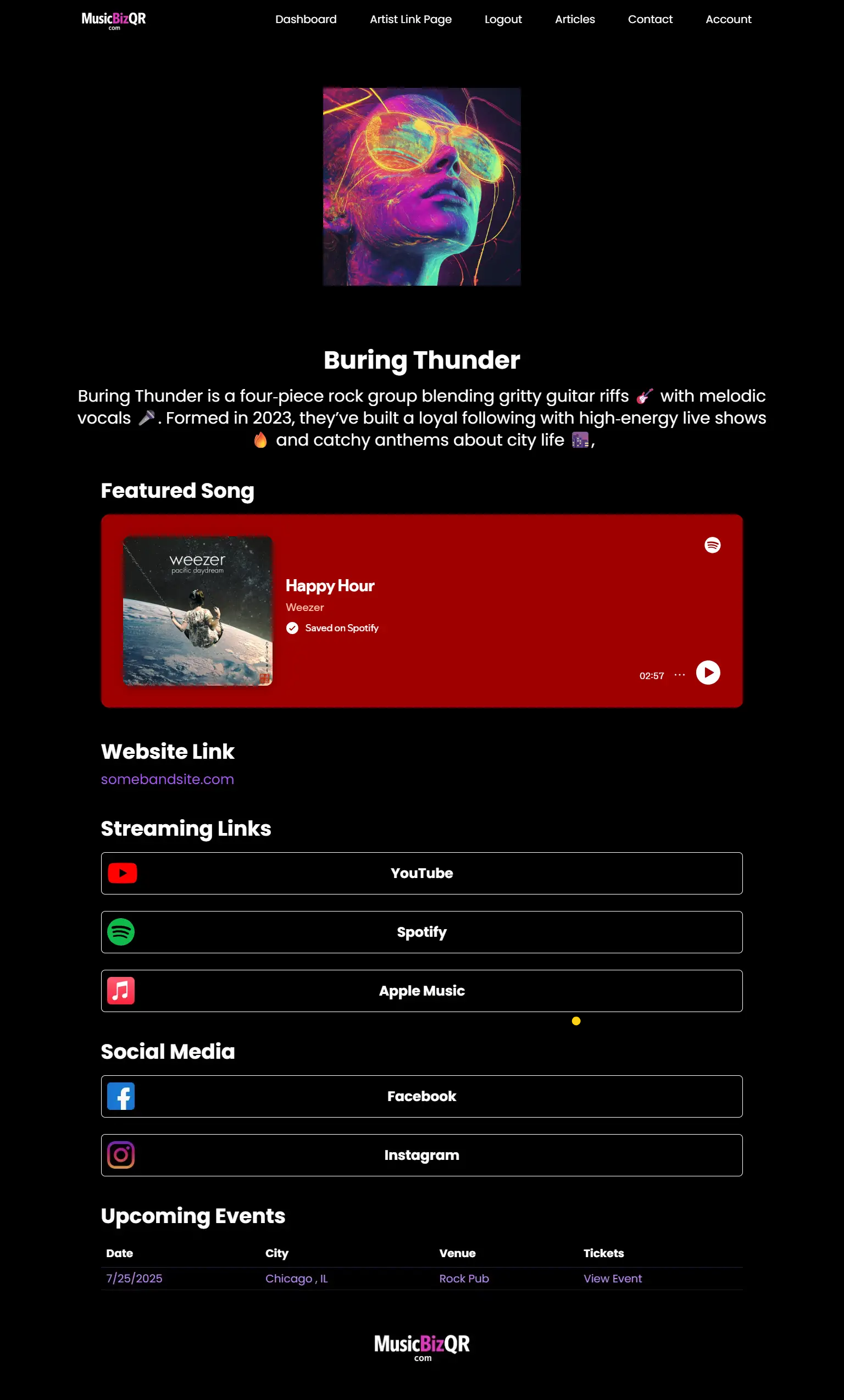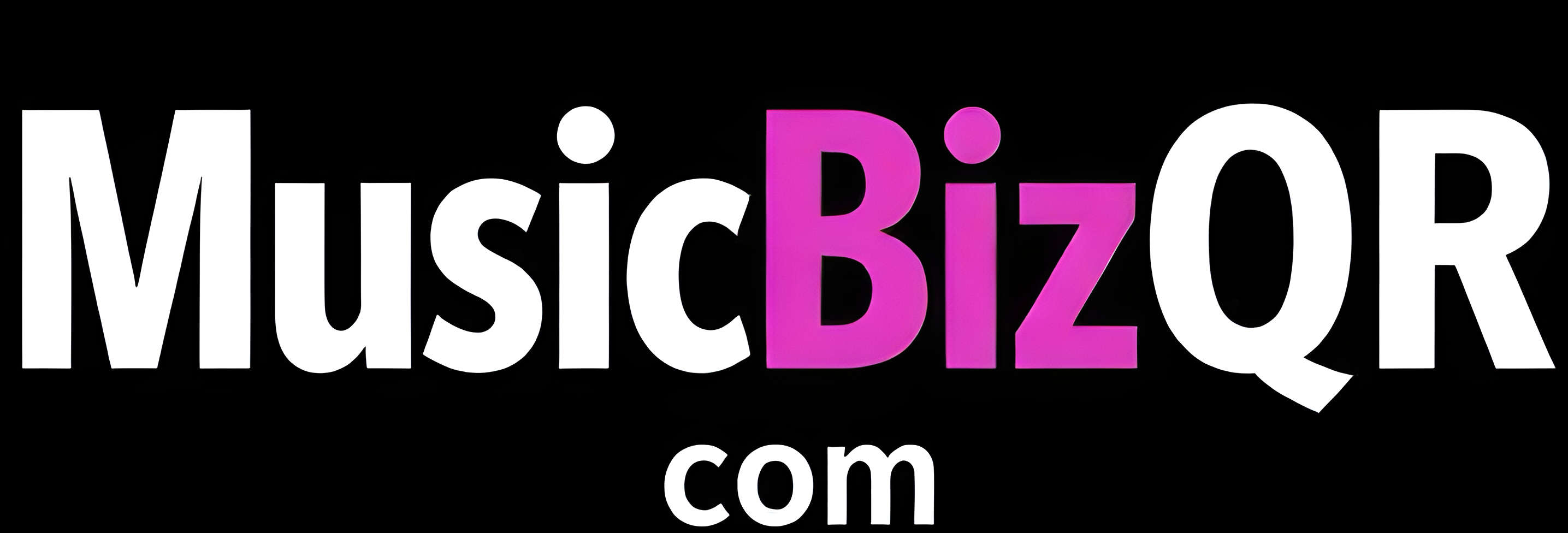Why Every Indie Band Needs a QR Code Strategy
Why Every Indie Band Needs a QR Code Strategy
In the backroom of a smoky bar on a Thursday night in Nashville, a three-piece band is tearing through their last song. As the final chords echo out, the drummer stands up and raises a battered poster with a glowing QR code slapped across the bottom.
“We're Karma Kites. Scan that, and you'll find everything.”
By the time they finish packing up, 46 people have scanned it.
This is what music marketing looks like in 2025: raw, direct, and driven by QR codes.
The Problem with Platforms
Ask any indie artist trying to grow, and they'll tell you the same thing: Instagram is dead, TikTok is unpredictable, and Spotify won’t tell you who your fans are. You're left feeding the algorithm, hoping your 15 seconds of magic doesn't get buried under dance trends.
QR codes offer something completely different — something yours.
Owning the Funnel
When fans scan your QR code, you're not just giving them a link — you're opening a door. Whether it leads to your latest track, your merch store, or a smart link with all your platforms in one place, the power lies in the ownership of that moment.
It’s not about reach. It’s about retention.
With tools like MusicBizQR, artists can track exactly when, where, and how people interact with their links. You can A/B test posters. You can see which cities respond best. You can build an email list — something TikTok will never give you.
Street Teams Go Digital
QR codes have become the new street team. Instead of handing out burned CDs or business cards, bands now post stickers, flyers, and even tattoos embedded with dynamic codes.
One Chicago rapper printed 2,000 QR stickers with his face on them and pasted them across train stations. Each scan led to a “choose-your-own-adventure” style music video. It went viral. Not because of the content — but because of the delivery system.
The Rise of Dynamic QR
There’s a big difference between static and dynamic codes. Static codes are locked — like a burned CD. But dynamic QR codes let you change the destination anytime. That means you can print once and update forever.
Dropping a new single? Just update the link. Running a merch sale? Swap it out. Hosting a secret show? Redirect everyone who ever scanned your code before.
Analytics That Actually Matter
QR code analytics cut through the noise. No more guessing what “engagement” really means. You get:
- Total scans
- Location data
- Device type
- Time of day
- Top-performing links
This data helps you think like a label executive — even if you’re unsigned.
Real-World Case: The Busking Revolution
Street performers in cities like Austin and London have started using QR codes for tipping. Some even rotate their code every week to track which songs or locations yield the most donations.
The result? Higher tips. Repeat fans. And a digital trail that turns casual listeners into long-term followers.
Building the Digital Tour
A band that hits 10 cities in 10 days can deploy a custom QR code for each location. Now you’re building geo-targeted fanbases, not just throwing darts in the dark.
Later, when you return to that city, you can retarget those fans with ticket links, merch offers, or exclusive meetups — all through the same QR code they scanned six months ago.
DIY Meets Direct-to-Fan
The real magic of QR codes is that they fit the DIY ethos like a glove. No middlemen. No gatekeepers. You build the audience. You own the journey.
And fans? They love the novelty, the frictionless experience, and the authenticity.
In an era where every artist is battling for attention, QR codes aren’t just a tool — they’re a strategy. A philosophy.
Final Note: Don’t Just Promote. Connect.
Promotion is easy. Connection is hard.
QR codes give you the chance to connect — instantly, visually, and memorably. Whether it’s on a vinyl sleeve, a sidewalk stencil, or your drummer’s T-shirt, the code is your handshake.
So the next time someone asks how to grow as an indie band in 2025, tell them this:
“Start with a QR code.”
Built for Musicians. Powered by Smart Links.
MusicBizQR gives you a powerful landing page with streaming links, videos, social buttons, and real-time fan analytics — all from a single QR code.
- 🎯 Unlimited link clicks & analytics
- 📈 Track Spotify streams, YouTube plays, and QR scans
- 📱 Mobile-optimized artist pages
- 🚀 Create your first Smart Link in seconds

Related Posts
Discover the art and science of crafting QR codes that scan flawlessly every time—from sizing and contrast to placement and branding. This in‑depth guide walks musicians through each step with real‑world stories and expert tips.
Discover how bands can use QR code marketing to grow their fanbase, boost engagement, and increase revenue with real-world strategies and examples.
Get more scans at shows. Exact sizes, contrast, distances, and placements for QR codes on posters, stage screens, and merch—battle-tested.
Dynamic QR codes let artists edit links, track scans, and grow fan funnels—without reprinting. Here’s why every musician should use them (and how).
Learn how indie bands can boost merch sales at live shows using QR codes. Engage fans, simplify purchases, and track what works—all with MusicBizQR.
Discover how QR codes are helping musicians grow their audience, boost engagement, and drive merch and ticket sales in 2025.
Learn how musicians are using QR codes to collect email addresses from fans during concerts and tours. Build your fanbase with smarter tech.
Discover how artists are using QR codes at live shows to turn fleeting moments into lasting fan relationships and revenue.
Learn how musicians use QR codes to grow fans, sell merch, promote tours, and build owned audiences in 2026. A complete, modern QR code strategy guide.
Discover how musicians are using QR codes to grow their fanbase, sell more merch, and promote shows. Learn why QR is the most underrated tool in music marketing.
Discover how to craft landing pages that turn every QR code scan into streams, signups, or sales. Learn narrative‑driven best practices, real‑world examples, and pro tips for mobile‑first experiences that engage and convert.
Discover how a thoughtful QR strategy can transform fan engagement, drive traffic to your music, and unlock new revenue streams for independent artists. Learn best practices and real‐world examples to build your own QR roadmap.
Discover how musicians are using QR codes to turn festival sets and tour stops into major fan growth engines. Real-world tactics that convert.
Learn how musicians can use QR codes at live shows to drive fan engagement, stream growth, and merch sales. Step-by-step tactics that actually work.
Discover the story of how an unknown indie band used QR codes and smart fan engagement to grow their audience and turn local shows into viral momentum.
Discover how QR codes are helping artists grow their fanbase, boost streams, and drive merch and ticket sales. Learn how to use QR codes to build your music career.
Discover how QR codes are revolutionizing music marketing, empowering bands and artists to engage fans, drive streams, and increase revenue.
Learn how QR codes are revolutionizing music discovery, making it easier for fans to connect instantly with new bands, content, and experiences.
How QR Codes Are Redefining Music Promotion for Indie Artists
Explore how QR codes are transforming the music industry's gig economy by empowering independent artists to connect, monetize, and grow without middlemen.
Discover how musicians are using QR codes at live shows to build long-term fan relationships. Learn proven strategies that turn casual listeners into superfans.
Learn how to design and deploy a high-converting QR code campaign for your next album drop. Includes tips on branding, analytics, and maximizing engagement.
Learn how indie musicians can use QR codes strategically to generate income, boost merch sales, and create lasting connections with fans.
Discover how bands can turn every live show into a powerful fan engagement moment using QR codes. Learn tactics that convert concertgoers into lifelong fans.
Discover how bands and solo artists can use QR codes to supercharge tour promotion, grow their fanbase, and drive ticket sales with ease.
